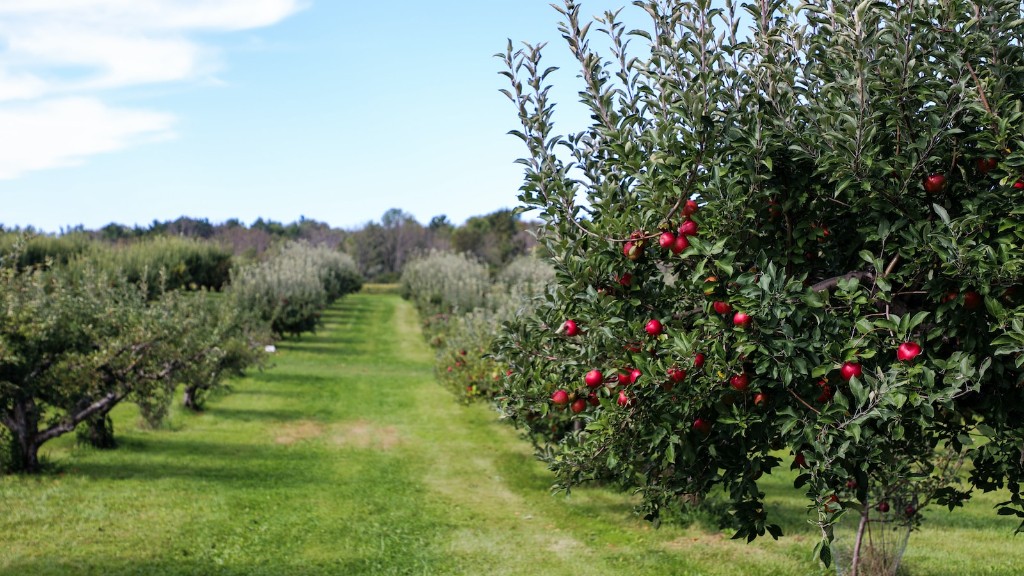Pre-planting Soil Preparation
Avocado trees require well-drained, fertile soil to thrive and produce fruit. To prepare the soil for planting an avocado tree, there are several pre-planting steps to consider. The most important factor before deciding to plant an avocado tree is to determine whether it is suitable for your region. Avocados prefer a warm climate and can handle a variety of soil types as long as the area has perfect to good drainage.
Pre-planting
To get the best results before planting, it is essential to prepare the soil properly. Firstly, the pH of the soil needs to be determined and if it is too acidic or alkaline, then soils need to be amended to balance the pH. An ideal pH for planting an avocado tree is between 6.0 and 7.0. Gypsum can be used for alkaline soils, and sulfur for acidic soils to amend the pH. Secondly, a soil test can be done to analyse the existing levels of phosphorus, potassium and nitrogen in the soil. If these levels are low, then applying the appropriate fertilizer can increase nutrient availability to the plant.
Additionally, it’s important to lightly till the soil to loosen it and remove any weeds and debris so that the roots of the tree have a good space to grow. Lastly, incorporate organic matter such as compost or composted manures into your soil as it provides essential nutrients to the soil.
Planting An Avocado Tree
Avocado trees can be planted in full sun or part shade. Although they prefer full sun, they can grow in part shade areas too. It’s important to plant the tree so the root ball is just slightly above the soil line to avoid waterlogging or drainage problems. Place mulch around the tree, approximately 6-10 inches (15-25 cm) away from the trunk to prevent competing plants from growing and protect the tree from extreme seasonal weather conditions. After planting, water the tree deeply every week, or whenever the top few inches of soil gets dry, for the first few months until the tree becomes established.
Fruiting Avocado Trees
Avocado trees require consistent feed throughout the fruiting season to help support fruitset and maximise yield. If soil tests done before planting suggest that the soil is poor in certain nutrients, then fertilizers with a balanced NPK ratio can be applied for fruiting avocado trees. If the soil does not need additional fertilizers, then applying organic matter such as manure or compost, or applying compost tea every month can be sufficient.
It’s important to limit nitrogen-heavy fertilizers and use a fertilizer which has potassium, phosphorus and micronutrients present so the tree has every opportunity to grow and produce fruit. Regularly spray the foliage with seaweed or molasses to promote healthy growth during the fruiting season.
Nitrogen Management In Avocado Trees
Nitrogen is a macronutrient found in many fertilizers. Although nitrogen is required by avocado trees, over application of nitrogen fertilizers can cause nutrient imbalances and reduce production. Too much nitrogen can create lush foliage at the expense of flowering and fruiting. The appropriate application of nitrogen fertilizers should be determined by soil tests and visual observation of the tree.
Nitrogen should be evenly distributed between and among trees and should not be concentrated in one area or tree as it can create nutrient imbalance or an accumulation of particular micro and macronutrients in one area of the orchard, resulting in unhealthy trees which are not producing fruit.
Irrigation For Avocado Trees
Water is vitally important for a successful avocado harvest. Watering trees is important for providing enough moisture for the root system and for sustaining active growth. A thorough understanding of the soil types and the availability of water on site is important for effective planning of the irrigation system.
Checking the water requirements of the tree is important before applying water as some species, like avocados, require more water than others. Avocado trees need at least 10 gallons (38 liters) of water per week per tree. The amount of water applied to the tree should match its need. The water should be evenly distributed around the tree without flooding the area to avoid waterlogging and root rot.
Pruning and Training Avocado Trees
Pruning is essential for avocado trees as it helps them to develop a strong branch structure. Pruninng should be done carefully to ensure that the natural form of the tree is maintained. The main branches should be trained to form a wide-angle V shape so the foliage and fruits can receive enough sunlight. Pruning should started when the tree is still young and should be done during the summer or early winter.
It is also important to remove any dead, infested or diseased debris from the tree as it can harbor pests and have a huge impact on the tree’s health. Pruning can also be used to increase light exposure, aeration and access to water for avocado trees.
Controlling Pests and Diseases
Avocado trees can be affected by several diseases and pests, especially in warmer climates. To ensure that an avocado tree is kept healthy, it is important to regularly check for signs of pest and disease infestations. Any infested or diseased branches or leaves should be removed promptly to reduce the possibility of spread.
Regular pruning of branches to maintain the canopy structure of the tree will also help to reduce the possibility of pest infestations. Insecticidal or horticultural oils and soapy water mixtures can be used to control pests and insecticides can be used to control diseases. Adopting integrated pest management strategies such as rotating trees between different varieties and avoiding planting in areas with high insect populations can also help in controlling pests.
Harvesting Avocado Trees
Harvesting avocados should be done when the fruits are mature, which can be determined by the color of the fruit and its size. Fruits should be picked by hand or with a pole or basket to avoid damages to the branches or the tree’s roots. After harvesting, the avocados should be allowed to ripen off the tree and should not be refrigerated immediately.
Avocado fruits will ripen at room temperature and it can take up to 7 days after harvesting for the fruits to fully ripen. Storing avocados in plastic bags can help speed up the ripening process.
Storing and Selling Avocado Fruits
Once the avocados are fully ripe, they should be inspected for quality and any damaged fruit should be discarded. The fruits can be stored at room temperature in well-ventilated plastic bags for up to a week. For longer storage, the fruits should be refrigerated.
When selling avocados, the fruits should be carefully packed and protected from damages, as damaged fruits will not be accepted by buyers. The packaging should also include instructions on how to store the avocado fruit and when it was harvested. The avocados should be sold fresh and be avoided selling overripe fruits, as this can damage the quality of the fruits.

